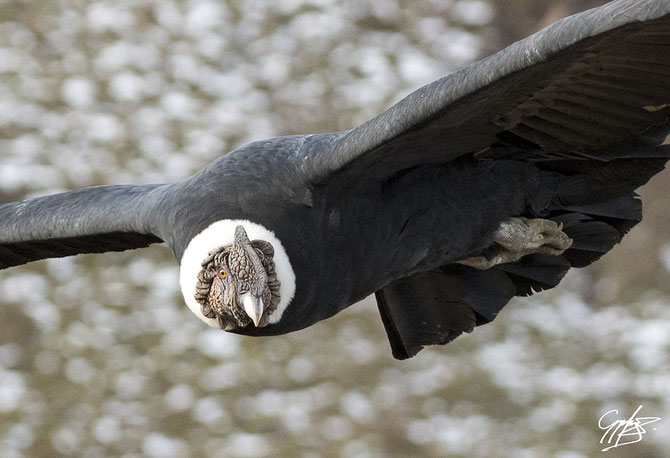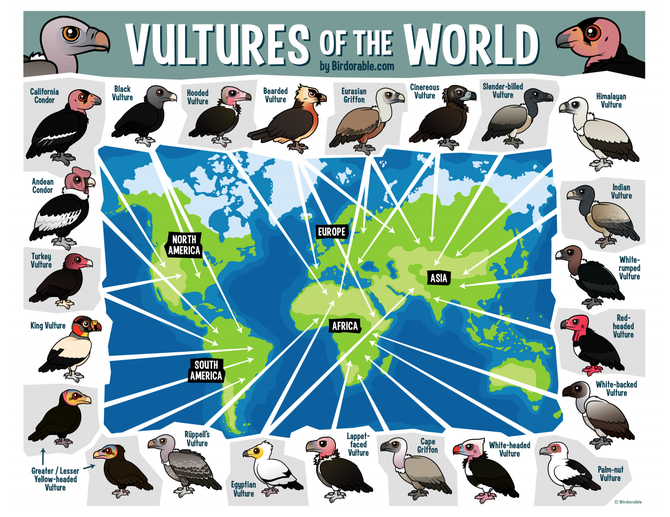
The Andean condor (Vultur gryphus) has a 3-metre wingspan and weighs up to 15kg, making it the world’s heaviest soaring bird. A new study reveals interesting results about the flight behaviour of this New World vulture species, demonstrating that it flaps its wings about 1% of the time during flight.
Soaring instead of flapping
Flying and travelling vast distances should require a lot of energy for large birds like vultures and condors, but these soaring birds have their own ‘tricks’, utilizing their surrounding landscape and weather conditions to take flight, gain uplift and maintain momentum in a very energy-efficient manner.
To understand the flight behaviour of the world’s heaviest soaring birds, researchers attached custom-made ‘flight recorders’ to Andean condors in Patagonia to record every single wingbeat and when and how individuals gained altitude. Remarkably, results demonstrated that the species flapped for only 1% of their flight time, which is among the very lowest estimated movement costs in vertebrates. Flapping was associated specifically during takeoff (75% of the time). Instead of flapping their wings, these birds soar the skies, which requires specific body positioning to exploit thermals efficiently, circling to gain height by taking advantage of those thermal uplifts. Even in winter conditions with weak thermals, researchers predict that condors flap for about 2 seconds per kilometre. Therefore, the overall flight effort in the largest soaring birds appears to be restrained by the requirements for takeoff.
Furthermore, what was particularly striking about these results was that birds were immature, thus demonstrating that even inexperienced birds can cover vast distances over land without flapping. There was even one bird that flew for over 5 hours without flapping, covering around 172 km.
The Andean condor’s expertise at soaring is crucial as it spends hours a day of circling high mountains looking for a meal of carrion due to its scavenging lifestyle.
Large vultures in Europe, like the Cinereous Vulture, are also experts at soaring. We have prepared a GPS track that demonstrates how a Cinereous Vulture uses the landscape, exploiting thermals to circle high and gain altitude, and then moving straight as it travels between thermals, repeating this sequence to travel long distances in a very energetically efficient way.
Old World vs New World Vultures

Vultures occur on all continents except Antarctica and Australia. There are two groups: ‘Old World’ and ‘New World’ vultures. The New World vultures are found in North and South America and the Old World vultures in Africa, Asia and Europe. The groups are not closely related; the resemblances arose by convergent evolution.
A big difference between old and new world vultures is that old world vultures depend on sight to find food whereas many new world vultures have a very good sense of smell (which is unusual for birds) and can smell dead animals from a distance of up to two kilometres.
Source
H. J. Williams, E. L. C. Shepard, Mark D. Holton, P. A. E. Alarcón, R. P. Wilson, S. A. (2020). Physical limits of flight performance in the heaviest soaring bird. Lambertucci Proceedings of the National Academy of Sciences. DOI: 10.1073/pnas.1907360117
Sign up to our newsletter and never miss any vulture news!



